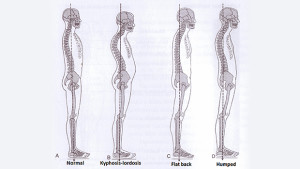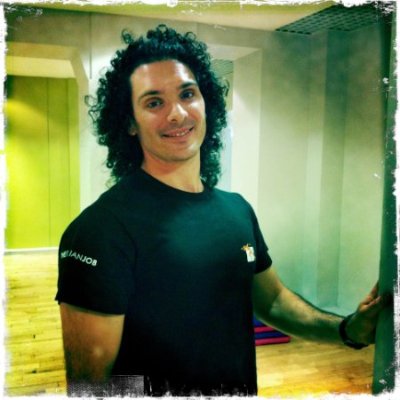Consideration of the body as a unit and dysfunctional posture.
Motion of the body incorporates the individual biomechanical properties of soft and hard tissues and kinematic aspects of the individual articulations into complicated movement processes.
The human gait is a good example of this integration. It can be described as a controlled falling with propulsion movement. The energy used for the gait is distributed over many muscles groups of the body.
 In normal gait one leg is moved forward while the weight of the body is supported by the opposite leg (swing phase). The foot goes to plantar flexion to dorsal flexion. The knees flexes and then extends at each step, the hip moves from extension to flexion, and the pelvis rotates and changed its tilt. The muscles of the lower spine, hip and trunk generate power.
In normal gait one leg is moved forward while the weight of the body is supported by the opposite leg (swing phase). The foot goes to plantar flexion to dorsal flexion. The knees flexes and then extends at each step, the hip moves from extension to flexion, and the pelvis rotates and changed its tilt. The muscles of the lower spine, hip and trunk generate power.
During the swinging phase the arms will compensate the balance of the rotating movements through the trunk. All the body is propelled forwards and “down” where the heel strikes of the extended leg. As the heel hits a surface, the foot rocks down and is decelerated by the anterior muscles of the leg.
From here the whole process starts again as a continuous load until the person decides to stop. This basic process of walking, which is also known as ambulation or locomotion, can reflect one of the most frequently encountered examples of the ability of the body to adapt to injury or degenerative processes.
Compensatory gait patterns arise when an injury has altered the normal mechanical functioning of the body. An injury to the knee or foot on one side may produce a compensatory shift of the body’s center of mass over the opposing limb. This will produce dysfunction followed by mechanical stress and pain to the opposite knee. Because the body works a s a unit the local ongoing dysfunction will affect more peripheral areas of the body such as back, hip or even the neck. Some aspect of the compensatory adjustments may survive the healing of the original injury, particularly if the recuperative process has been lengthy due to brain registering the compensatory adjustment as normal function. This emphasizes the importance of a thorough patient history combined with skillful observation and knowledge of mechanical body function to arrive at the diagnosis and treatment of somatic dysfunction.

